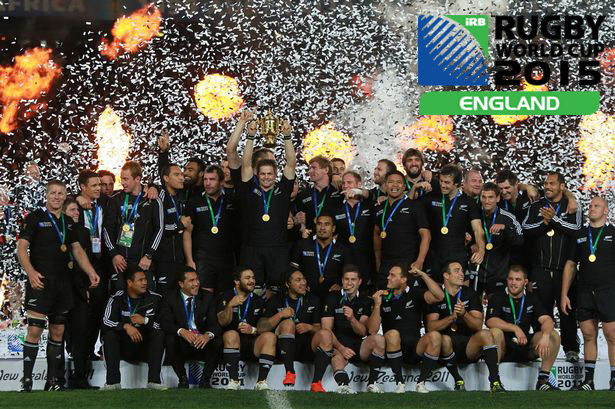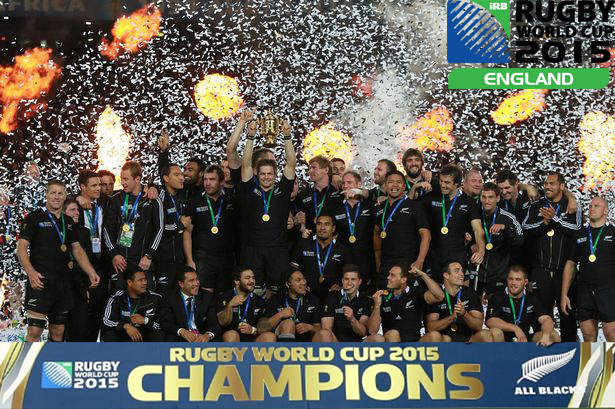Seven editions played, 281 rainbow matches played and 14,523 points scored. 25 teams with at least one participation, eight semifinalists, five finalists, and four different winners. But the Rugby World Cup, the world’s top rugby competition, is much more than that. Behind those numbers is an event that, despite its short history, has established itself in the landscape of sporting events and is preparing for its grand return to England in September, the very place where tradition fixes rugby’s birthplace. Since its first edition in 1987, the Tournament has experienced impressive growth in numbers, and the figures over the years have swelled to the point that the Rugby World Cup is now the third-largest sporting event in terms of global impact, behind the Summer Olympics and the World Cup. How has such growth been possible, in not even 30 years of existence and in just seven editions?
Formal writing dated 1969 and signed by the International Rugby Board, the highest body in the rugby world, stipulated that “the organization of competitions in which the participating teams are representatives of individual federations would never be approved.” Bearing in mind that institutionally rugby was born in the second half of the nineteenth century until more or less the day before yesterday the idea of a Rugby World Cup was not only distant but expressly forbidden. Fortunately, things have turned out differently.
The Australian and New Zealand federations, separately, set to work to submit two dossiers to the IRB on the advisability of holding a rainbow competition. The two reports had taken about two years of work, but they were worth the thought. On December 1, 1984, the two proposals were submitted to the International Rugby Board, and a few months later, in May 1985, a decisive vote was taken about the future organization of a Rugby World Cup. The ayes won 6-2 (New Zealand, South Africa, England, France, Wales, and Australia in favor, Ireland and Scotland against). Two years later, exactly on May 22, 1987, in New Zealand, the first Rugby World Cup officially kicked off. Was it a success? Yes. On what scale? Unimaginable.
The first boom the World Cup experienced between the first and second editions, organized in Great Britain in 1991. From one World Cup to the next, the total revenue generated by the Tournament increased by almost 800 percent from 4.1 million euros in 1987 to over 32.4 million in 1991, generating four times the net profit. As for the popularity of the competition, the Rugby World Cup immediately entered the hearts of the public, and in just two editions the number of spectators at the stadium doubled, as did the number of those who followed the event in front of a television screen.
And it is precisely the figure for television coverage of the event that is perhaps the one that most, and best, testifies to the success that the World Cup has enjoyed. If in 1987 the 32 matches were broadcast in 17 countries, with a total audience of 300 million viewers, four years later 107 countries will air the event reaching an audience of 1.75 billion people. With the same number of matches, broadcasting hours devoted to the RWC increased from 103 to 1100 growing tenfold.
Organizing an event in Great Britain, compared to New Zealand, presents many more opportunities for obvious geographical reasons; a much larger audience pool, and no time zone problems; these favorable circumstances and a perfect organizational machine explain the success of that edition. The 1991 Rugby World Cup was the largest sporting event ever organized in the United Kingdom up to that time. The whole of Europe realized the enormous potential of the Tournament. Even the organizers of the International Rugby Board noticed, and in 1991 they wrested a 9.6 million euro contract from the BBC to air 24 of the total 32 matches. Four years earlier, the BBC had also secured the rights to the event but paid about seven times less (1.4 million euros). Investors sniffed at the enormous opportunities offered by such a sounding board and sponsors invested ten times more than four years earlier. It is not a stretch to say that if the Rugby World Cup has risen so high over the years, much is due to the momentum of the second edition even more than the first.
A further boost came in 1999 when the format of the competition changed. The Tournament was expanded to include four new teams, for a total of 20 participants, and as a result, the number of matches increased from 32 to 41. In 2003, the formula still adopted today was introduced; the complex format of 1999 (which also included a play-off round) was revised and, with the same number of participating teams, the matches became 48.
Increasing the number of scheduled matches means automatically growing all the data considered so far. This also and especially applies to broadcasting. More teams and more matches mean more countries connected, more hours of broadcasting, and more overall audience. In other words, more nations to sell rights to and more expensive royalties. It goes without saying that the more the size of a sporting event grows and the more its popularity increases, the more the media must give coverage, extra match programming, including in-depth coverage. And it is no coincidence that it is precisely the 1999 edition, organized in Great Britain, that will record impressive growth in broadcasting hours, overall revenue, and net profit.
To break all records it will be necessary to wait eight years, cross the Channel and arrive at the 2007 Rugby World Cup in France. The total induced revenue generated by that World Cup was calculated at 228 million euros, with a profit of 170 million. Profit from the sale of television rights reached 113 million euros, with a total of 8,500 hours of broadcasting, three thousand more than in 2003. The total number of spectators in the stadium was 2.2 million, in addition to the 4.2 billion people who watched the 48 rainbow matches in front of the TV. It had only been 20 years since 1987, and the Rugby World Cup had already climbed to the podium in the ranking of unidisciplinary sporting events for nations with the most spectators ever, after the 2006 World Cup and the 2002 World Cup.
It should be noted that, for the reasons already pointed out, the World Cup organized in 2011 in New Zealand bucked the trend. And the discussion can also be extended to the 2003 edition in Australia, a country, but more importantly a market, that is more distant and less attractive than the European one.
But let us come to the present day. For the 2015 Rugby World Cup, the forecast from the economic point of view is record-breaking, with an estimated 190 million euros in profit, while the figure for spectators in the stadium and in front of the screens is expected to be around the 2007 figures. This last figure helps us understand from what perspective the choice to hold the 2019 World Cup in Japan was made. A choice that aims to practice new avenues, to open the doors to new audiences of fans, breakthrough, and establish itself in a market that offers countless opportunities on a commercial level.
Parallel to the economic and media growth of the World Cup, there has also been a sporting change in rugby in general, affecting both the game from a technical point of view and the players from a physical one. At each rainbow fixture, teams measure and evaluate the work they have done over the past four years, while the candidates for victory, by the way, they play, give important indications of the lines of technical and tactical evolution.
Speaking of changes, from 1987 to 2003 actual playing minutes increased from 22 to 44, forcing a radical rethinking of rugby players’ training methodologies and their lifestyles in general. Staffs expanded to include coaches dedicated to individual phases of the game, athletic and mental trainers, nutritionists, and professional chefs experienced in sports nutrition. The ranks of the teams’ accompanying teams, in the succession of rainbow events, have gradually grown larger.
About eating habits, it only takes a few numbers to tell how much they have changed as a result of the “transformation” of rugby players into athletes. Research conducted in 2007 in France showed that compared to 20 years earlier, an international rugby player’s consumption of food and water had increased by 20 percent and 400 percent, respectively, while that of alcohol had drastically reduced by 70 percent. Not only that, in 2007 the average weight had increased by almost 13 kilograms since 1987, but with a significantly lower percentage of fat mass and a higher percentage of muscle mass.
The responsibility of participating in a huge event such as the World Cup has gradually changed the way players view themselves professionally. These are the words of England hooker Bryan Moore, who played in the first three editions of the World Cup: “When the World Cup started, they began to see us as we had never seen ourselves before, which was real sportsmen Since the World Cup started, we have become athletes.”
When the focus on physical preparation reached very high levels, we became aware of another component that should not be neglected but trained and prepared in the right way: emotional balance. With the increase in visibility, media attention, and, above all, performance expectations, players were progressively subjected to ever-increasing stresses and pressures, and to handle them in the right way, preparation at the mental level became increasingly important. And that is why South Africa, just as an example, will fly to London with a professional psychologist on their staff.
In conclusion, the advent of the Rugby World Cup has transformed rugby forever and across the board. It has changed the way it is experienced inside the field, with ever bigger and faster players, but also outside, thanks to an ever more widespread and extended enjoyment. It is impossible to wonder what limits a competition that has experienced such growth is not even thirty years may have. We will have to wait for the 2019 Japanese edition to get some indications in this regard. Only then will we know how fertile are the soils outside the traditional boundaries of Ovalia.

